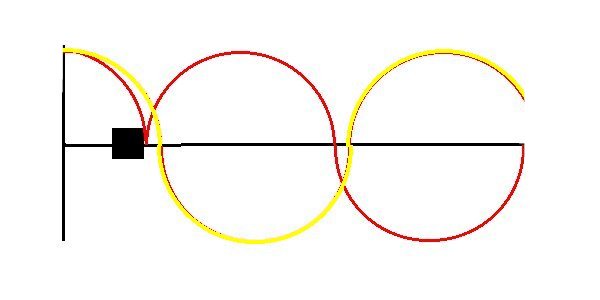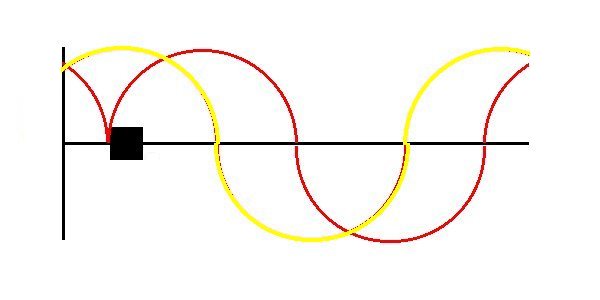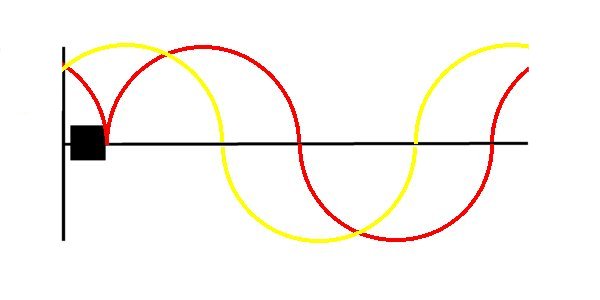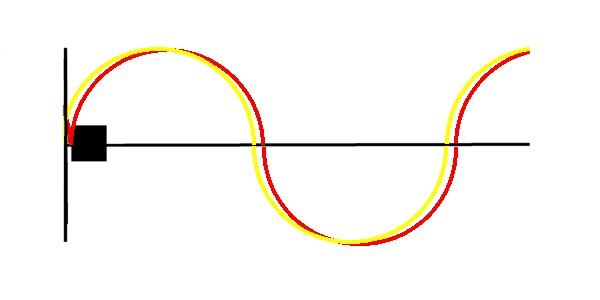[CENTER]
Which way to point your subwoofer box
by Eddie Runner[/CENTER]
Which way to aim a trunk mounted woofer box in a car has been quite a topic of speculation for years. Folks, through experimenting have found that oftentimes the woofer box sounds much better when aimed backwards, the explanations I hear for why this works are usually quite absurd.
One absurd explanation is "the sound wave travels further when the box aims to the rear and by traveling further it sounds better. " Not true, sound actually looses volume as it travels, not becoming louder like his explanation seems to imply!
Folks also say "the wave has more room to develop." Well I don't like this explanation either, sound can really reinforce itself amazingly well in a small enclosed space without the need for any wave developing space!
And there used to be a story floating around called "bass trap" which inferred a magical property of some cars to eat up all the bass and not let it get to your ears.
There still really exists, a problem of building a wonderful well thought out and superbly engineered woofer box which makes bass so perfect my eyes water, with only a few watts of input on my test bench, but then barely has any output when installed into the car, this has driven me nuts for years.
Or, building a great box for 12's and installing it only to have less bass than the one I did the day before in a different car using only 8's.
The big clue came when I noticed there was much more bass with the trunk open than with the trunk closed!
How the hell can that happen???
Opening the trunk lets sound escape(!), letting sound go away cant possible be a good thing. Then why does opening the trunk make the bass inside the car much louder????
I dragged out the test equipment (audio Oscillators, RTAs, Pink noise generators, and built me a couple of test boxes to experiment with.
-B&K Sweep Oscillator, this thing will make any tone you can hear and can sweep through them automatically.
-Fluke Benchmeter, very accurate for watching and comparing levels
-HP Audio sine oscillator , can make any tone without the automatic sweep of the previous unit.
-Audio Control RTA, it's like you can WATCH the sounds.
-Sound Technology Audio Oscillator, Distortion analyzer, volt meter
-Oscilloscope
-HP Audio distortion analyzer and super sensitive volt meter.
After a few days of playing with all the fun toys I discovered the bass that goes away when opening the trunk was causing cancellation when kept in the car (trunk closed), and turning the box backward made less of a difference when opening the trunk, and moving the box all the way to the back of the trunk eliminated having an increase in SPL when opening the trunk totally.
In summary I found:
1. box at front of trunk speakers aiming forward or up through the rear deck = poor in car bass response, much better with trunk open.
2. box at front of trunk speakers aiming backward = better in car bass response by far, slightly better with trunk open.
3. box at back of trunk with speakers aiming forward = better in car bass, no difference with trunk open.
4. box at back of trunk with speakers aiming backward = best in car bass response and gets less bass with trunk open.
I used sine waves and mapped out the phase relationships between the incident (direct) sound wave entering the car and the reflected wave that hits the back of the trunk and reflects forward. Since the reflection is bounced into the listening area, you can treat them much the same as having two sources...
I drew some pictures to illustrate what I found.
[CENTER]

[/CENTER]
In this picture, try to imagine the back of the trunk is the vertical black line at the left of the picture and the little square is the speaker box. This picture is an illustration of what happens when sound comes out of the right side (front side) of the little square speaker box. Sound actually goes forward into the car (incident wave (RED)) and also backwards to reflect off of the back of the trunk (reflected wave (YELLOW))... Both the incident wave and reflected wave get to the listener but they are way way out of phase causing mucho cancellation in the listening area. If you could open the trunk, the reflected wave would disappear and NOT reflect back into the car thus no cancellation...
[CENTER]

[/CENTER]
In this picture, the speaker box has been aimed at the trunk instead of in the car and it is plain to see the incident and reflected wave are not nearly so much out of phase as in picture 1! Resulting in much better bass!
[CENTER]

[/CENTER]
This picture it represents the speaker box being moved to the rear of the trunk with the speakers aiming forward. The waves are a little closer to being in phase with each other. (were gettin there!)
[CENTER]

[/CENTER]
Finally, in this picture we are aiming the rear mounted speaker box to the rear so the incident and reflected wave are very close to being in perfect phase, reinforcing each other quite well.
These pictures are simulating a 60Hz bass note with the rear of the box mounted approximately 3 feet from the back of the trunk (reflector)
Keep in mind we are only discussing the incident and rear reflected sound in an effort to try to simplify this, the reflecting sound waves in a car are much more complex than these drawings indicate but we must start simple before we work ourselves into the more complex, hopefully this will be a nice foundation for those of you who wish to study this phenomenon further.
And for those that have the mindset that this can't be true because the interior of cars are small in relation to bass wavelengths, so what? The full wavelength does not have to completely develop to be OUT OF PHASE or IN PHASE with its own reflected sound. The pictures above are showing a 60Hz wavelength and the bounce distance to reflect back out of phase a complete 180 degrees is just over 4 ft. At higher frequencies the distance is less (120Hz is 2.3ft).




 [/CENTER]
[/CENTER] [/CENTER]
[/CENTER] [/CENTER]
[/CENTER] [/CENTER]
[/CENTER]